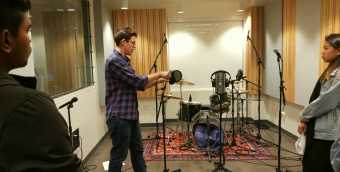Archival Collections in the Classroom: A Conversation with CAMD’s Kara Braciale
Last semester, students in Professor Kara Braciale’s “5D Experience/Drawing” class did a deep dive in the University’s archival collections, specifically exploring artifacts, stories, and documents related to the culture and history of the neighborhoods surrounding Northeastern University.
Students began their introduction to these archival materials by listening to oral histories from the Lower Roxbury Black History Project. After listening to the oral histories, each student was asked to identify an area of interest — a person, place, a theme — on which they would conduct further research and eventually develop a digital exhibition.
Connecting students to these archival collections provided them an opportunity to engage with varied primary sources and historical objects, to connect with their larger Boston community through place-based learning, and to create projects that are meaningful and accessible to both the Northeastern community and its neighbors.
I had a conversation with Kara Braciale about her experience with collaborating with the library and archives for this project, and about her decision to use Northeastern’s archival collections as a central resource in her course.
Can you give us a little background on your course and about how this project came to be?
5D Fundamentals Experience/Drawing is a foundational course in Art + Design that considers experience, interaction, behavior and context through a lens of cultural production. For the past few semesters I have incorporated Service-Learning – the classes do project-based work that fills a need for our community partner (in this case Northeastern Crossing) while reinforcing connections to our course content. In my discussions with Derek Lumpkins (Director of Neighborhood Partnerships and Programs) and Marissa Luse (Campus Engagement Coordinator) at Northeastern Crossing, they were interested in projects relating to the Lower Roxbury Black History Project. Since the Lower Roxbury Black History Project is an online archive and the final project of 5D is screen-based, the idea of student designed websites connected to that archive coalesced from our conversations.
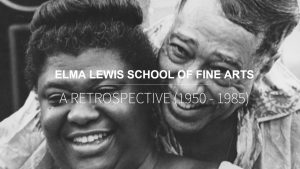 Can you tell me a little more about your course’s project? What were your expectations around the web project?
The assignment evolved over the course of the semester since the content of the Lower Roxbury Black History Project was new to both me and to the students. We knew that we would be making websites and that they would come out of research relating to that archive but beyond that we didn’t know the shape of them. Our orientation in the archives with you, Regina, and Giordana Mecagni helped crystallize our process. After we learned how to navigate the physical collections, students went back into the Lower Roxbury Black History Project and listened to the histories and shared summaries and moments of interest with each other. Some students realized that they wanted to pursue what initially interested them during our orientation where we looked at the United South End Settlements records. Because Northeastern Crossing connects to all of the neighborhoods that surround Northeastern, it felt like fair game. Using the Lower Roxbury Black History Project as a model, our goal was to surface documents and materials relating to local people and institutions thereby increasing access to local histories.
Can you tell me a little more about your course’s project? What were your expectations around the web project?
The assignment evolved over the course of the semester since the content of the Lower Roxbury Black History Project was new to both me and to the students. We knew that we would be making websites and that they would come out of research relating to that archive but beyond that we didn’t know the shape of them. Our orientation in the archives with you, Regina, and Giordana Mecagni helped crystallize our process. After we learned how to navigate the physical collections, students went back into the Lower Roxbury Black History Project and listened to the histories and shared summaries and moments of interest with each other. Some students realized that they wanted to pursue what initially interested them during our orientation where we looked at the United South End Settlements records. Because Northeastern Crossing connects to all of the neighborhoods that surround Northeastern, it felt like fair game. Using the Lower Roxbury Black History Project as a model, our goal was to surface documents and materials relating to local people and institutions thereby increasing access to local histories.
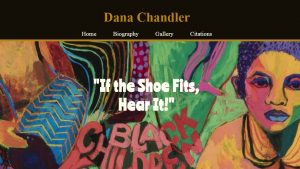 What learning objectives were you hoping students would accomplish by the end of the project? Do you feel students achieved those objectives?
Students were tasked with researching and producing a screen-based experience that situated archival material in the context of the Northeastern Crossing website (their final home). This demanded a sustained research effort in the Archives as well as particular knowledge of our partner organization which students gained through firsthand experience of its programming as well through conversation and interaction with the staff. In 5D, students are pressed to be very specific about audience and context and the layering of spaces engaged in this project: web/virtual; archival/historic; local/community provided a fertile, if complex, environment in which to develop their work.
In a very concrete sense I wanted students to consider translating the physical materials found in the archives into a compelling experience on a screen. I also wanted them to consider the final home of their small websites as a framing device: who will be using their site and to what end? How is the purpose of their site influenced by the context in which it will be placed? From a skills-based perspective I wanted them to be able to design, construct and deploy a simple html/css based website. And finally I wanted them to have the experience of identifying and researching a subject that interested them personally.
One of the most gratifying aspects of the project development was seeing how deeply students were willing to dive into areas that fascinated them. Listening to interviews in the Lower Roxbury Black History project might have gotten them thinking about the art scene in Roxbury which led them to discover particular artists or ask questions about art education based on what they encountered in the archives. Some students were led to ask questions about the origins of organizations that are still active or about the built environment of our neighborhood. Every person or partnership produced a site that achieved the fundamental objectives for the project. More than that, students were able to uncover materials that otherwise live out of view and situate them as part of a local history. In the critique, we had an amazing moment where Derek Lumpkins was able to point to a picture of a young girl in a dance class in the 1950’s who still lives in Roxbury!
What learning objectives were you hoping students would accomplish by the end of the project? Do you feel students achieved those objectives?
Students were tasked with researching and producing a screen-based experience that situated archival material in the context of the Northeastern Crossing website (their final home). This demanded a sustained research effort in the Archives as well as particular knowledge of our partner organization which students gained through firsthand experience of its programming as well through conversation and interaction with the staff. In 5D, students are pressed to be very specific about audience and context and the layering of spaces engaged in this project: web/virtual; archival/historic; local/community provided a fertile, if complex, environment in which to develop their work.
In a very concrete sense I wanted students to consider translating the physical materials found in the archives into a compelling experience on a screen. I also wanted them to consider the final home of their small websites as a framing device: who will be using their site and to what end? How is the purpose of their site influenced by the context in which it will be placed? From a skills-based perspective I wanted them to be able to design, construct and deploy a simple html/css based website. And finally I wanted them to have the experience of identifying and researching a subject that interested them personally.
One of the most gratifying aspects of the project development was seeing how deeply students were willing to dive into areas that fascinated them. Listening to interviews in the Lower Roxbury Black History project might have gotten them thinking about the art scene in Roxbury which led them to discover particular artists or ask questions about art education based on what they encountered in the archives. Some students were led to ask questions about the origins of organizations that are still active or about the built environment of our neighborhood. Every person or partnership produced a site that achieved the fundamental objectives for the project. More than that, students were able to uncover materials that otherwise live out of view and situate them as part of a local history. In the critique, we had an amazing moment where Derek Lumpkins was able to point to a picture of a young girl in a dance class in the 1950’s who still lives in Roxbury!
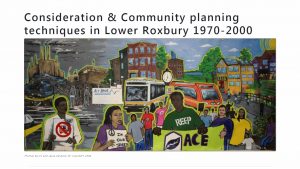 Do you have any comments you’d like to add about what it’s like collaborating with the library & archives for teaching and learning?
Working with the staff of Archives and Special Collections was a highlight of my semester. The depth of expertise and facility and thoughtfulness with which it is shared by the staff is such a wonderful resource. Certainly these projects would never have happened without the aid of Regina and Giordana! I can see the value of orientation in the Archives for students in any discipline.
Explore a few of the students’ website projects below:
Consideration & Community Planning Techniques in Lower Roxbury 1970-2000 by Ralph Perricelli, AMD’18
Dana Chandler by Kevin Cannon and Greg Hackel-Johnson, AMD’19
Elma Lewis School of Fine Arts: A Retrospective (1950-1985) by Samantha Borri, E/AMD’19, and Melina Paulli, AMD’19
“WE SHALL NOT BE MOVED FROM PARCEL 19”: The Story of Villa Victoria by Nick Salerno, E’18
Interested in integrating Northeastern’s archives and special collections into your course? Fill out the library session form to request an archives workshop for your students or contact your subject librarian to discuss how to build an assignment based on the Archive’s primary source materials.
Do you have any comments you’d like to add about what it’s like collaborating with the library & archives for teaching and learning?
Working with the staff of Archives and Special Collections was a highlight of my semester. The depth of expertise and facility and thoughtfulness with which it is shared by the staff is such a wonderful resource. Certainly these projects would never have happened without the aid of Regina and Giordana! I can see the value of orientation in the Archives for students in any discipline.
Explore a few of the students’ website projects below:
Consideration & Community Planning Techniques in Lower Roxbury 1970-2000 by Ralph Perricelli, AMD’18
Dana Chandler by Kevin Cannon and Greg Hackel-Johnson, AMD’19
Elma Lewis School of Fine Arts: A Retrospective (1950-1985) by Samantha Borri, E/AMD’19, and Melina Paulli, AMD’19
“WE SHALL NOT BE MOVED FROM PARCEL 19”: The Story of Villa Victoria by Nick Salerno, E’18
Interested in integrating Northeastern’s archives and special collections into your course? Fill out the library session form to request an archives workshop for your students or contact your subject librarian to discuss how to build an assignment based on the Archive’s primary source materials.

Elma Lewis School of Fine Arts: A Retrospective (1950-1985) by Samantha Borri, E/AMD’19, and Melina Paulli, AMD’19

Dana Chandler by Kevin Cannon and Greg Hackel-Johnson, AMD’19

Consideration & Community Planning Techniques in Lower Roxbury 1970-2000 by Ralph Perricelli, AMD’18
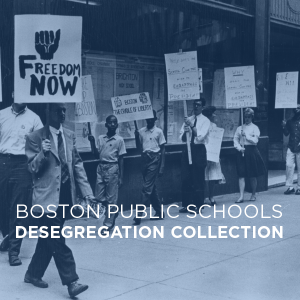
 Here’s a taste of what we have planned:
Here’s a taste of what we have planned:
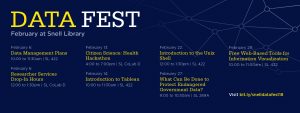 Check out the full lineup and register here:
Check out the full lineup and register here: 